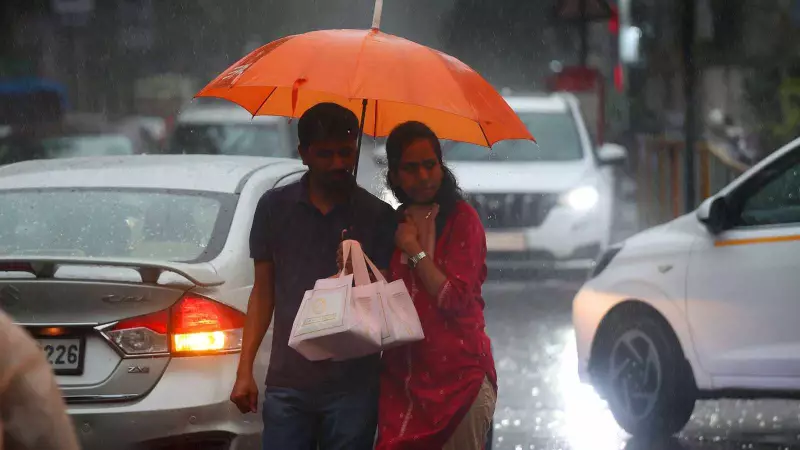
The Mumbai Metropolitan Region (MMR) experienced a dramatic weather shift on Monday as heavy rainfall swept across the area, bringing relief from pollution but creating chaos for commuters and residents alike. The downpour arrived just a day after Diwali celebrations, washing away the post-festival haze but replacing it with waterlogged streets and traffic snarls.
According to the India Meteorological Department (IMD), this is just the beginning. Weather officials have predicted more rainfall in the coming days, with isolated heavy spells likely to continue disrupting normal life across Mumbai and surrounding areas.
Rainfall Data and Impact
Between 8:30 am and 8:30 pm on Monday, several areas recorded significant rainfall. Santacruz weather station reported 23 mm of rain, while Colaba recorded 10.2 mm. The surrounding regions didn't escape either, with Thane receiving 25 mm, Ulhasnagar 22 mm, and Dombivli 20 mm during the same period.
The sudden showers led to immediate consequences across the region:
- Waterlogging in low-lying areas causing traffic disruptions
- Delays in local train services affecting thousands of commuters
- Reduced visibility making driving conditions hazardous
- Pedestrians struggling with water-filled streets and footpaths
IMD's Weather Outlook
IMD scientist Sushma Nair explained the meteorological factors behind this unexpected rainfall. "The prevailing western disturbance and a cyclonic circulation over northeast Arabian Sea off the north Maharashtra coast are contributing to these conditions," she stated.
The weather department has issued specific predictions for the coming days, indicating that Tuesday might see similar weather patterns with generally cloudy skies and moderate rainfall in the city and suburbs. The rainfall intensity could increase in isolated places, particularly during the afternoon and evening hours.
Post-Diwali Weather Pattern
The timing of these showers is particularly noteworthy, occurring immediately after Diwali when the city was experiencing typical post-festival pollution levels. The rains have effectively washed away much of the suspended particulate matter, significantly improving air quality across the region.
However, this silver lining comes with its own set of challenges as residents who were celebrating with fireworks just a day earlier now found themselves navigating through waterlogged streets and dealing with the practical difficulties that accompany heavy rainfall in the metropolitan region.
Authorities have advised citizens to stay updated with weather alerts and plan their travel accordingly, especially during peak morning and evening hours when the rainfall intensity is expected to be at its highest.





